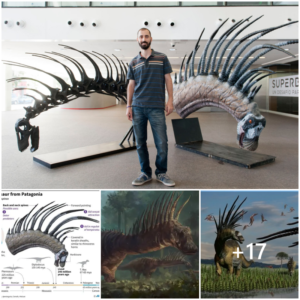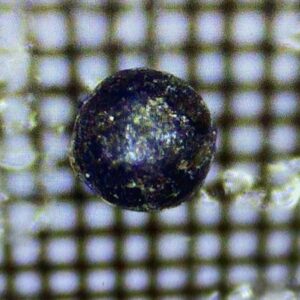One of the most captivating fossils I’ve encountered hails from the renowned Miocene deposits at Agate Fossil Beds National Monument near Harrison, Nebraska. Daeodon, affectionately known as the “hell pig,” was among the fiercest and most intriguing mammals of this ancient environment around 19 million years ago.
Fossil Focus: Daeodon
These massive omnivores resembled giant boars, although they were not directly related to modern pigs. Daeodon was among the largest mammals of its era, roughly the size of a modern bison, boasting a massive head and exceptionally large teeth capable of crushing and tearing. Daeodon inhabited the open grasslands of western North America, and while fossils are rare, they have been discovered from Oregon to Nebraska. Named for the Greek term “dreadful tooth,” Daeodon certainly lived up to its name, sporting an intimidating array of teeth, including large canine tusks, suitable for consuming a wide variety of foods. Its diet likely consisted of live prey, carrion, plants, and tubers. It’s probable that Daeodon was an apex predator, but similar to modern-day omnivores, it likely opportunistically consumed whatever edible items it could find.

A pair of Daeodon fossils “scavenging” at Agate Fossil Beds National Monument, Harrison, NE. Photo credit: John Gnida.
The nearly complete Daeodon specimen found at Agate Springs Ranch (which later became Agate Fossil Beds National Monument) and initially described in 1905, was previously known for over 90 years as Dinohyus. However, a 1998 study revealed that Dinohyus was indistinguishable from Daeodon, a fossil originally named by famed “Bone Wars” paleontologist Edward Drinker Cope in 1878. As a result, Dinohyus was reclassified as Daeodon, with the latter name taking precedence due to its earlier use. Daeodon was the largest member of an extinct group of mammals known as entelodonts, with the massive beast capable of reaching a height of over 6 feet at the shoulder and weighing over 900 pounds.

Life reconstruction of Daeodon at the Denver Museum of Nature and Science, Denver, CO. Photo credit: John Gnida.
The numerous animals fossilized at Agate Fossil Beds National Monument are believed to have perished around a water source, likely during a drought. Mammals like Moropus (an unusual extinct relative of the horse and rhino) and Menoceras (a medium-sized ancient rhino) have been discovered in small herds at the fossil beds. As the carcasses of these large animals accumulated, predators like the beardog Daphoenodon and omnivores like Daeodon came to scavenge the remains but also eventually fell victim to the drought.
Entelodonts became extinct around 16 million years ago, but fortunately, the remarkable fossil remains of Daeodon found at Agate Fossil Beds provide us with a comprehensive understanding of this fearsome and remarkable creature from the past.




